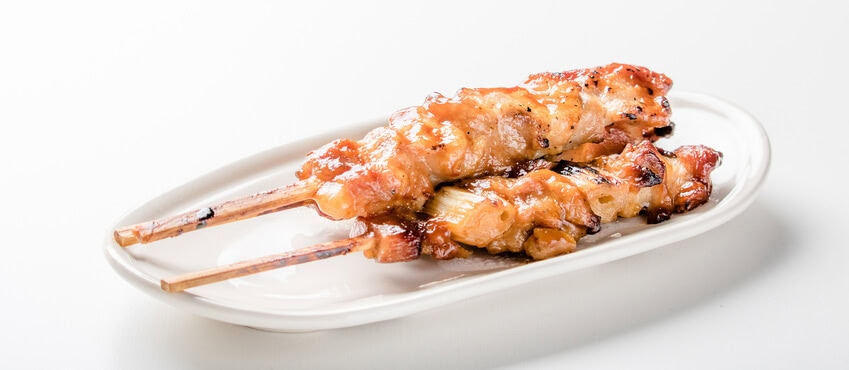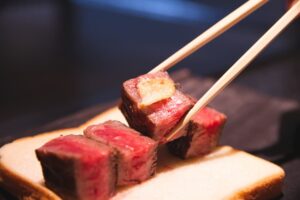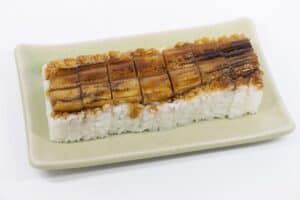From its origins in the lush landscapes of Miyazaki to its journey onto dining tables globally, Miyazaki beef embodies the essence of Japanese culinary excellence. In this article, we will explore the fascinating story behind Miyazaki beef, its production process, its distinct characteristics, and why it has earned a place as one of Japan’s most coveted gourmet experiences.
What is Miyazaki beef?

Miyazaki Beef is a premium type of Japanese black cattle raised and fattened exclusively in Miyazaki Prefecture, known for its exceptional meat quality graded 4th or 5th by the Japan Meat Grading Association. These cattle are descendants of specially designated breeding bulls. With over 500 certified Miyazaki Beef outlets globally, there’s a comprehensive system managing everything from production and fattening to meat processing and distribution. Notably, Miyazaki Gyu earned Geographical Indication (GI) status in December 2017 under the Act on the Protection of Names of Specified Agriculture, Forestry, and Fisheries Products, securing its status as a revered regional specialty.
Roots of Miyazaki beef

Miyazaki Prefecture, historically known for horse farming, experienced a decline in horse production post-war, leading to a rapid increase in Wagyu beef production. Today, Miyazaki ranks third in Japan for Wagyu cattle. By 1971, the region had shifted to an integrated production system, focusing on beef calf production, fattening, and meat processing. Miyazaki’s beef calves are highly regarded nationwide, with around 40% being exported outside the prefecture as the foundation for branded beef across Japan. Miyazaki Prefecture prioritized Wagyu cattle improvement with traits like ease of fattening, maintenance, and meat quality, leading to the establishment of the Miyazaki Prefecture Livestock Improvement Corporation in 1973—the nation’s first unified management system for breeding bulls. This effort, known as the “Miyazaki Method,” represents a unique collaboration between producers, related organizations, and the government, continuing its success to this day.
What is meat quality grade?

Meat quality grade is based on four items: marbling, meat color and luster, meat firmness and texture, and fat color and quality. You can refer to our article about Wagyu Beef about the quality grade and you can also visit the website of the Japan Meat Grading Association.
Breeding information

In Miyazaki Prefecture, Japanese Kuroge breed bulls are selectively bred by leveraging the distinctive traits of Japan’s major cattle lines: the robust physique of the “Ketaka line,” the balanced characteristics of the “Ito line,” and the high meat quality of the “Tajima line.” Using the prefecture’s specialized breeding techniques, which involve repeated refinement and enhancement, exceptional breeding cattle named “Anpei” and “Itohide” is successfully developed. Collaborative efforts between Miyazaki Prefecture, the JA Group, and other beef cattle-related organizations have played a crucial role in breeding and enhancing both male and female cattle, ultimately leading to the renowned Miyazaki gyu we know today. Moreover, the Miyazaki Prefecture Livestock Improvement Corporation oversees the centralized management of these breeding bulls, ensuring the ongoing quality and development of Miyazaki’s Wagyu beef industry.
About taste of Miyazaki Beef

Miyazaki beef is popular for its exceptional quality and exquisite taste, meeting stringent criteria to ensure its excellence. This premium beef stands out for its superior meat quality and finely marbled texture, resulting in a soft and smooth consistency with a rich, flavorful profile. When savored, Miyazaki gyu delights the palate with a delicate sweetness and a luxurious aroma that enhances the overall dining experience. The careful breeding and stringent standards applied to Miyazaki gyu contribute to its distinctive taste and ensure a remarkable culinary sensation with every bite.
Miyazaki beef FAQ
- What makes Miyazaki beef different from other types of Wagyu beef?
-
Miyazaki beef stands out from other Wagyu beef varieties due to its unique characteristics derived from the Japanese Black cattle breed raised exclusively in Miyazaki Prefecture. The cattle are carefully bred and managed, focusing on traits like ease of fattening, good meat quality, and overall robustness. Miyazaki beef is famous for its exceptional marbling, which contributes to its melt-in-your-mouth tenderness and rich flavor.
- What cooking methods for preparing Miyazaki beef to fully appreciate its quality?
-
To fully appreciate the quality of Miyazaki beef, locals recommend to use cooking methods that highlight its tenderness and delicate flavor. Miyazaki beef is best enjoyed when cooked to medium-rare or medium doneness to preserve its natural juices and flavor. Grilling, pan-searing, or teppanyaki (iron griddle) cooking methods are popular choices for Miyazaki beef, as they allow for quick searing while maintaining the meat’s tenderness.
Miyazaki beef Recipe
Miyazaki beef rolls with potato and cheese Ingredients
| Ingredients for 4 person | Measurements |
|---|---|
| Thinly sliced beef | 200g |
| Potatoes | 50g |
| Cheese | 100g |
| Broccoli | 40g |
| Garlic | 10g |
| Salad oil | 20g |
| Flour | 14g |
| Light soy sauce | 7g |
| Sake | 7g |
| Salt and pepper | 1g |
How to make Miyazaki beef?
Wrap the potatoes with the skin on and heat in the microwave for 4 minutes. Peel the potatoes and cut them into 1cm cubes.
Cut the cheese into 1cm square sticks.
Spread the beef and sprinkle with salt, pepper, and flour.
Place one potato and cheese on each, and roll up while adjusting the shape.
Heat the oil, add the garlic (thinly sliced), add sake and light soy sauce, and stir-fry until golden brown. Then, heat another oil in another frying pan, fry broccoli, and season with salt and pepper.
Where to buy Miyazaki beef?
Yakiniku Kokaen (焼肉の幸加園 本店)

At Yakiniku Kokaen, which is open only in the evening, if you order the Premier Yakiniku course (3 types: 4,950 yen, 6,050 yen, and 7,700 yen), you can enjoy everything from Miyazaki gyu loin to offal and Miyazaki beef. One of the great things about yakiniku is that you can eat it the way you like it done. Recommended menu items include Miyazaki gyu skirt steak (1,870 yen), which has less fat and a light texture, and koji-zuke short ribs (1,580 yen), marinated in salt koji that softens the meat and brings out the flavor.
Teppanyaki Steak Hitoba Miyachiku (一ツ葉ミヤチク)

A restaurant with an elegant atmosphere, located close to the Ichiha coast. At lunchtime, you can enjoy Miyazaki beef steak at an affordable price. The lean steak course (150g) for 3,000 yen and the ladies course (100g for loin) for 4,800 yen comes with soup, grilled vegetables, and a salad bar and drink bar, making for a very satisfying lunch.
Tonkatsu/Shabu Shabu Miyachiku (とんかつ ・しゃぶしゃぶ ミヤチク)

The recommended menu for both lunch and dinner at Tonkatsu/Shabu Shabu Miyachiku Restaurant is the Miyazaki Beef Lean Shabu Shabu Set (3,980 yen per person). The meat in the set is 150g of lean Miyazaki gyu. You can eat it as shabu-shabu with vegetables and mushrooms. Shabu-shabu soup is available in two types: Japanese-style kelp soup stock and rich local chicken salt soup stock. Both soups go perfectly with Miyazaki gyu! You can enjoy changing the taste depending on the soup.
Final Thoughts

In conclusion, if you have the opportunity to visit Japan, don’t miss the chance to indulge in Miyazaki beef. This premium Wagyu delicacy offers a culinary experience like no other, with its melt-in-your-mouth tenderness, rich flavor, and exquisite marbling. Whether you savor it as a beautifully marbled steak or in traditional Japanese dishes, tasting Miyazaki beef is a memorable experience that showcases the best of Japanese cuisine.
If you are into Japanese wagyu beef, there are many other wagyu beef in Japan for you to try.
















Comments